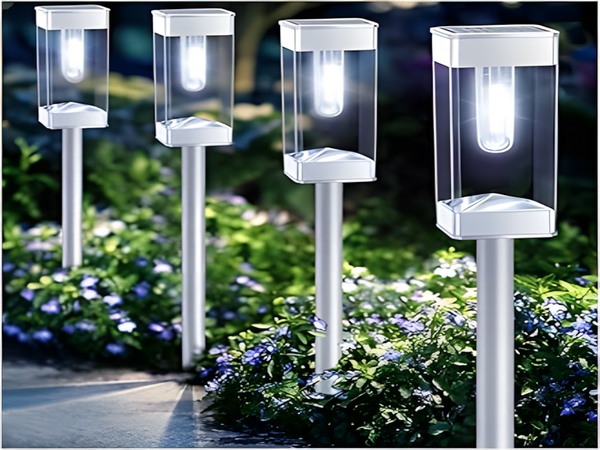
Solar garden lights are widely used in various locations such as communities, parks, and office buildings due to their beautiful design and environmentally friendly, energy-saving solar power. Their novel and fashionable shapes provide not only lighting functions but also beautify the environment. Additionally, they do not consume conventional electricity, and there is no need for trenching and wiring, making them widely accepted and adopted. So, what are the components of solar garden lights? Below, we will introduce them.
1. Solar panels are divided into monocrystalline silicon panels and polycrystalline silicon panels. Monocrystalline silicon panels are made from high-purity monocrystalline silicon rods and are currently the most rapidly developed type of solar battery. Polycrystalline silicon solar panels are formed by arranging high-conversion-efficiency polycrystalline silicon solar cells in different series and arrays into a solar module.
2. Batteries are electrical and chemical devices that store chemical energy and release electrical energy when necessary. Their basic principle is based on electrochemical reaction. During charging, electrical energy is converted into chemical energy for storage, while during discharging, chemical energy is converted back into electricity to supply external systems. Batteries should be stored in environments with temperatures between 0-36 degrees. However, they generally have a storage period of 3-6 months, and batteries exceeding a 3-month storage period should be recharged. The installation site should be kept away from heat sources and places where sparks may occur, with a safety distance greater than 0.5m. Direct sunlight exposure should be avoided, and they should not be placed in environments with radioactive or corrosive gases. Batteries must not be stored in closed containers.

The battery underground box is a product developed along with the growth and application of solar garden lights. It is primarily designed to house batteries and has the following features:

1. The underground box is sealed to solve the waterproof problem.
2. The box extends through a conduit to the base of the lamp, solving ventilation issues.
3. The unique reinforced design effectively addresses the heat dissipation and insulation issues for the batteries in the internal environment.
4. Made from high-quality materials through a one-time injection molding process, it is characterized by shock resistance, corrosion resistance, and acid-base resistance, with high compression strength.
5. The underground box, being buried underground and connected to the lamp’s foundation, effectively helps prevent theft.
3. Solar controller: The solar controller’s role is to manage the operational status of the entire system and provide overcharge and over-discharge protection for the batteries. In areas with large temperature fluctuations, a qualified controller should also feature temperature compensation. Additional functions such as light control switches and time control switches should be optional for the controller.
4. Inverter: In many situations, it is necessary to provide 220VAC or 110VAC power supply. Since the direct output of solar energy is typically 12VDC, 24VDC, or 48VDC, a DC-AC inverter is required to convert the direct current from the solar power generation system into alternating current for 220VAC appliances. In cases where various voltage levels are needed, a DC-DC inverter is also required, for example, to convert 24VDC energy into 5VDC energy.
The overview of solar garden light components concludes here. With the rising cost of electricity, increasing awareness of energy conservation and environmental protection in society, and government support for the energy-saving industry, solar garden lights are expected to replace traditional lighting and become the mainstream in the market, promising a bright future.



